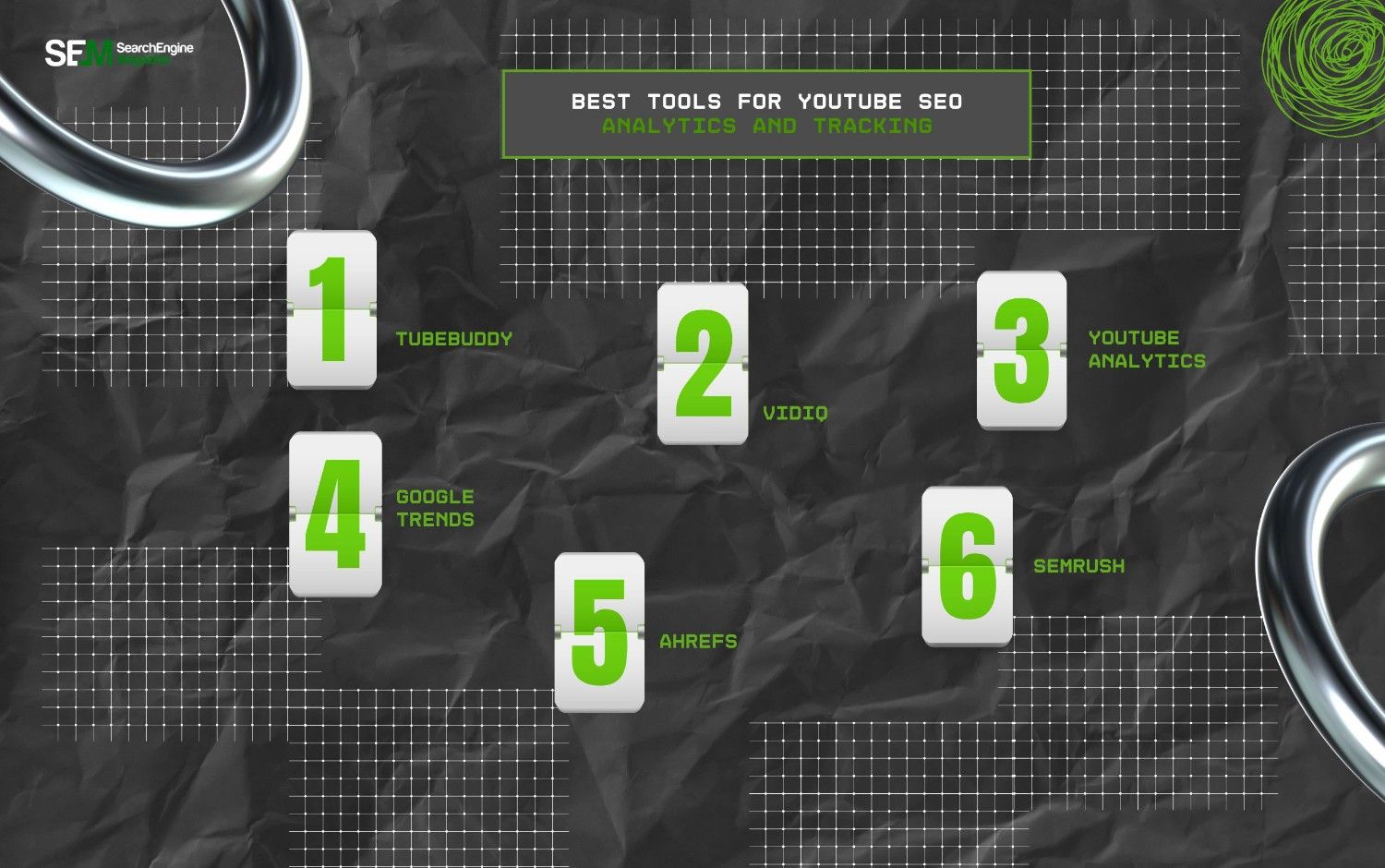What Does PMO Mean In Text? Decoding Social Media Abbreviations
Nov 19, 2025

Nov 19, 2025

Nov 19, 2025

Nov 19, 2025

Nov 17, 2025

Nov 17, 2025

Nov 14, 2025

Nov 13, 2025

Nov 13, 2025
Sorry, but nothing matched your search "". Please try again with some different keywords.


As the digital marketing landscape evolves every day, building brand presence on a single platform isn’t gonna win the race.
Rather, being omnipresent on multiple platforms is the key trend of 2025.
And among the various creative platforms, YouTube has been an OG place to promote brands and attract new customers. Making businesses meet their target audience in a jiffy.
So, by simply leveraging various creative strategies, they can improve the online discoverability and audience engagement.
But similar to search engines, YouTube’s algorithms rank videos based on certain factors. And, cracking the cheatsheet to optimize your content can boost its ranking on YouTube.
So, if you are also wondering — “How to rank videos on YouTube?” The answer is having a YouTube SEO strategy.
In this blog, I am going to discuss the diverse aspects of YouTube SEO by focusing on—
Stay tuned!

First things first, YouTube SEO refers to the optimization process for video content and channels to rank on the platform’s search results page.
That is, helping content appear on viewers’ recommendation pages and lists.
Moreover, being a part of the Google ecosystem, YouTube comes with a similar search algorithm. Showing valuable and relatable content that matches the users’ search queries.
So, YouTube SEO provides a comprehensive suite of practices to improve audience engagement and brand visibility in the market.
YouTube is not a budding platform. It’s been on the internet for years before Instagram or TikTok became popular. So, it provides access to a massive global audience.
As the report from Semrush highlights—
“With over 1 billion hours watched daily, even a small share of view time can meaningfully grow your audience or business”.
Moreover, the search system and recommendation algorithm help brands get discovered and attract new customers.
And, unlike social media’s temporary popularity, optimized YouTube videos can rank on the search page for years. So, it is a great way to promote brands and enhance online visibility.
Being a part of Google, YouTube’s ranking algorithm follows a specific pattern. That is, it ranks videos and channels based on certain ranking factors.
Similar to the search engine algorithms, YouTube aims to rank content that directly addresses the user queries. That is, it highly prioritizes the viewers.
For instance, if someone is searching for “How to make a pencil holder?” It shows videos with similar titles or hashtags. So, there won’t be any “Tutorial to tie a shoelace” kinda video.
Moreover, based on the audience engagement — views, likes, and comments — YouTube suggests the most popular ones on top.
As YouTube has mentioned to Search Engine Land—
“Our algorithm doesn’t pay attention to videos; it pays attention to viewers. So, rather than trying to make videos that’ll make an algorithm happy, focus on making videos that make your viewers happy.”

Now, ranking on YouTube requires you to optimize the video content in the correct way. So, here are some of the best practices to optimize your content for YouTube SEO—
Firstly, keywords are the backbone of discoverability for any search algorithm. So, be it Google or YouTube, using relevant and long-tailed keywords can tweak your marketing game.
It’s just that, to find keywords, brands need to think like a viewer rather than a businessman. So, they need to identify what the audience might be looking for and create content addressing them.
As the report from HubSpot recommends—
“When you’re working with YouTube SEO, think about where you’re placing your keywords. It’s like leaving breadcrumbs for viewers to find your videos. Put these keywords in your video’s file name, title, description, and tags. Imagine you’re giving YouTube a map to understand what your video is about.”
It’s a given that catchy and appealing titles attract an audience more than simple ones. That is, using clickable titles can improve your click-through rates immensely.
So, within the 60 to 70 character limit, brands can combine the relevant keyword and the video coverage element. This way, viewers can understand the context and engage better.
Unlike viewers, YouTube’s algorithm cannot play through the videos to understand their content. Rather, it goes through the tags and captions to understand the context.
So, when brands use specific tags (around 5 to 10), YouTube categorizes the content and shows it when there is a similar user query.
Moreover, captions play a game-changing part in YouTube SEO. That is, even if YouTube provides its auto-caption feature, it’s not perfect.
So, uploading the closed captions can help YouTube read through them to better understand the content. This is a two-win situation, as both YouTube and viewers find it easier to follow.
According to Semrush, brands can reach a global audience easily—
“For global reach, add captions in languages where your topic has strong demand. YouTube’s support for multi-language captions lets you reach international viewers without creating separate videos.”
Just like pagination in Google’s SEO, chapters and timestamps help in breaking long videos into smaller parts. This makes them into searchable sections and appear in YouTube’s searches.
Moreover, adding the exact timestamps to the sections can further improve their searchability. So, both YouTube and viewers can scroll and click the relevant part of the video.
Finally, internally linking the other videos, previously published on the channel, in the description can improve audience engagement.
That is, the viewers can check out the other relatable videos from the description and spend more time in the channel. So, improving the overall engagement metrics.
Sometimes, not everything goes as planned. That is, there might be a sudden decline in the viewer engagement with your videos.
So, here are some common causes and troubleshooting ideas—

Simply implementing the YouTube SEO strategy is not enough. Monitoring and analyzing its performance helps adjust it according to the changing online landscapes.
So, here are some SEO analytics and tracking tools—
Having the tools and knowing the strategies is not enough. To ensure your video ranks on YouTube, here are some expert tips to follow—
Now, with this complete guide, anyone can boost their YouTube SEO performance instantly.
So, if you haven’t tried them yet, it’s high time to get started. Go on and use these SEO techniques to skyrocket the brand visibility today!
Here are some of the common questions around YouTube SEO that most users look for.
Even though both YouTube SEO and traditional SEO are part of the SEO ecosystem, they are not the same. That is, YouTube SEO is more focused on optimizing video content, prioritizing user engagement, and tagging for visibility. Whereas traditional SEO is designed for text-based web content. Prioritizing website authority, backlinks, and other on-page optimization factors for ranking on Google’s SERPs.
Yes, absolutely. Since thumbnails play a major role in impacting the click-through rates, one of the core ranking factors for YouTube, they immensely affect the overall SEO performance of video content.
Honestly, both internal and external traffic help YouTube’s algorithm to understand the value and popularity of the YouTube videos. Moreover, the external traffic further improves the click-through rates for the videos. So, any traffic from Google or other social media is quite beneficial for YouTube SEO performance.
Yes. Since hashtags help social media platforms, or even YouTube, to categorize the videos in particular niche segments, using them can improve visibility. Moreover, the right hashtags can show your content to the right audience. So, improving the overall discoverability of the videos.

What Does PMO Mean In Text? Decoding Social M...
Nov 19, 2025
What Does IMY Mean? Decoding The Social Media...
Nov 19, 2025
Pagination SEO: How To Boost Indexation And U...
Nov 17, 2025
Catturd Twitter: Who Is This Influencing Inte...
Nov 17, 2025
Paying Down Tax Debt: Tools and Resources for...
Nov 14, 2025

